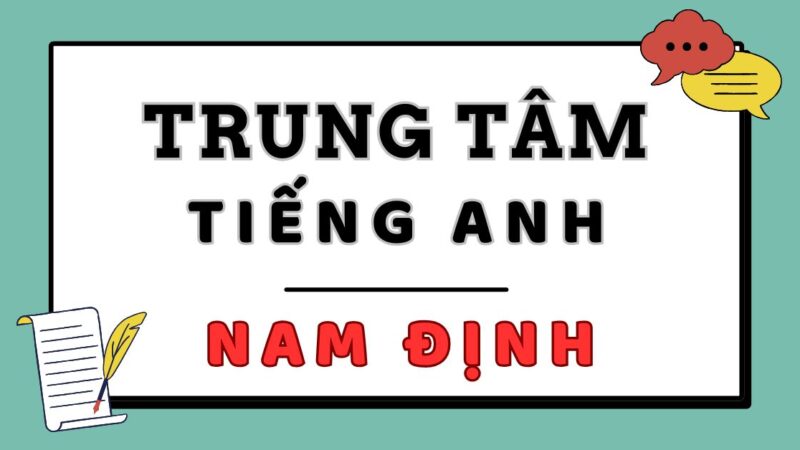[Hướng dẫn] Cách làm bài từ loại trong tiếng anh đơn giản dễ nhớ
![[Hướng dẫn] Cách làm bài từ loại trong tiếng anh đơn giản dễ nhớ](https://truongnguyentatthanh.edu.vn/wp-content/uploads/Huong-dan-Cach-lam-bai-tu-loai-trong-tieng-anh.jpg)
Following the knowledge about vocabulary, how can we apply that knowledge to specific types of exercises? Join Nguyễn Tất Thành in following the article below to learn how to make vocabulary exercises in English extremely easy to remember.
5 Common types of vocabulary exercises in English
To review the basic knowledge you have learned, let’s review the 5 most common and common types of exercises on the topic of vocabulary right below.
Bạn đang xem: [Hướng dẫn] Cách làm bài từ loại trong tiếng anh đơn giản dễ nhớ
Type 1: Exercises to recognize word types through word structure
Recognizing word types through word formation is the main exercise in the grammar section on word types. You need to understand the signs of recognizing word types and grammatical structures to perform this exercise well.
Ex: In order to suppress harmful insects and weeds, garden maintenance companies must choose the right products and apply them _______A. correctionB. correctlyC. correctedD. correcting
Answer: B
Form 2: Word conversion exercise (Word Form)
To do the word transformation exercises, you need to remember the identification signs as well as the specific functions of each word type. For each specific sentence case, apply the knowledge you have acquired to complete the exercise.
Ex: Can you recommend some good (book)?
Answer: books
Type 3: Find and correct errors
Finding and correcting errors is a type of lesson that requires learners to have the ability to think and observe the structure of words in sentences.
Ex: In 1892, the first long-distance telephone line between Chicago and New York was officially opened.
Answer: opening => opened
Form 4: Arrange the words to complete the sentence
Content knowledge about word order is maximally applied in the form of exercises to rearrange words to form complete sentences. Once you have mastered word order, this type of lesson will certainly not be difficult for you.
Ex: in / We/ study / past/ and / present / in /events /Vietnam/ and in /the /world/ history.
Answer: We study the events in the past and present in Vietnam and in the world in history.
Form 5: Fill in the blanks with words
With the fill-in-the-blank form, in order to choose the appropriate word, you need to determine the correct type of word to fill in as well as choose a word whose meaning matches the context of the sentence.
Ex: I thought there was somebody behind me, but when I …., there was nobody there.
Answer: looked round
Instructions for doing exercises on English words according to form
To be able to complete vocabulary exercises, memorizing basic knowledge is extremely necessary.
Knowledge to remember: How to recognize & position different types of words
First, you need to distinguish the functions and signs of different word types:
|
Word type
|
Identification signs
|
Location
|
|
Noun – N
|
Nouns often have the suffix:
|
|
|
Verb – V
|
Verbs often have suffixes:
|
|
|
Adjective – Adj
|
Adjectives often have suffixes:
|
|
|
Adverb – Adv
|
Adverbs are words that modify verbs, adjectives or entire sentences. Usually ends with ly: hardly, beautifully, fully,…
|
|
|
Pronoun – P
|
|
|
|
Preposition – Pre
|
Prepositions are words used to show the relationship between two different nouns in a sentence.
|
|
|
Determinants
|
Determiners are used to limit or define a noun
|
|
|
Conjunctions
|
Conjunctions are words used to connect words, phrases, and clauses in a sentence.
|
|
|
Interjection
|
Interjections are words used to express emotions. Often used in everyday communication.
|
Stand alone at the beginning of a sentence, ending with an exclamation mark
|
Summary of how to do vocabulary exercises in English
English word exercises are very diverse, so if we don’t know how to do them, it will be very difficult to conquer this grammar topic. Below are instructions on how to do the test to recognize types of words through word structure characteristics and how to do the word type test in Word Form/Word Choice format.
How to do the task of recognizing types of words
To be able to do the correct form of the lesson to recognize types of words, we must rely on the characteristics of word structure to identify them.
For word formation in the field of words, we follow these two steps:
- Step 1: Determine the type of word by reading the question carefully and observing the position of the word to be filled in.
- Step 2: Observe the answers and choose the correct answer.
For word formation in the field of grammar, you need to master the grammatical structure, auxiliary types of verbs as well as comparative forms of the following 3 forms:
- Form 1: Adjective -ed or ing
- Form 2: Auxiliary of the verb
- Form 3: Comparison form
How to do word type exercises in English in Word Form/ Word Choice format
For the word choice/word form format, you must be able to understand and remember grammatical knowledge of word types, including word position in sentences and how to recognize certain vocabulary. To do this type of lesson, we perform the following 2 steps:
- Step 1: Observe from the front and the blank space to determine the type of word to fill in.
- Step 2: Identify which word to look for in the most appropriate word answers.
General principles
There are two general principles that you need to follow when encountering exercises about types of words in English:
1. Identify the words that need to fill in the blanks in the lesson and find words with corresponding words to fill in the blanks.
2. Based on the meaning and style of the passage, infer the words to fill in.
4 tips for doing homework on vocabulary in English
The following tips will help you easily pass the fill-in-the-blank task:
1. For the blank space in the middle of the clause in the subject position:
We need to generalize the components of the phrase containing the blank to determine the structure/idiom being used.
- The verb is generalized in its infinitive form: To (DO).
- Words for things are generalized in the form: SOMETHING
- Word for person: SOMEBODY
- Note that you need to pay special attention to the prepositions of the above structures/idioms.
2. For the blank space at the beginning of the sentence followed by a comma (,), we fill in adverbs (unfortunately/ actually/ suddenly/ obviously/ accordingly/ surprisingly/ however/ therefore/ moreover/ next/ recently/ nowadays)
3. For the blank space between two clauses, fill in the conjunction (because/ after/ when/ while/ although)
4. For the blank space between two clauses immediately after the noun to be modified, we use pronouns (who/ whom/ which/ that)
Tips for doing exercises to find errors in words
The exercise to find word errors that we often encounter has three main types: spelling errors, errors in the use of words, and grammatical errors.
Type 1: Spelling errors, singular, plural.
The question will deceive us with a misspelled word. Our job is to find that mistake through the vocabulary we have learned.
For example: There are differences and similarities between Vietnamese and American culture.
(The mistake here is that cultures must be changed to cultures because the cultures of the two countries must be in the plural.)
Type 2: Errors in the use of word types: Nouns, verbs, adjectives… or much, many, sentence structures “So…that…”, “such…that…:”
So + adj/ adv + that + clause
Such + (a/ an) + adj + n + that + clause
Type 3: Grammatical errors: Some common grammatical errors include the following:
1. Error in verb tense
2. Error of using wrong relative pronouns
3. Errors in complements
4. Error Wrong way to use conditional sentences
5. Errors in prepositions
6. Errors in comparison forms
7. Error in agreement between subject and verb
How to do word sorting exercises
The exercise on arranging words into complete sentences needs to focus on two things:
- Master the word order in sentences.
- Identify the word types in the suggestions and arrangements.
How to do word filling exercises in English
With word filling exercises, it requires the learner’s ability to analyze and judge based on knowledge of grammar and vocabulary, and at the same time requires the ability to read and understand passages. To do this type of exercise, we follow these steps:
- Step 1: Read the entire article quickly from beginning to end, without stopping when encountering new words or information you do not understand. This reading is to find the content, main ideas, and organization of information in the article.
- Step 2: Analyze the blanks that need to be filled in. Note that you need to read both the sentences before and after the sentence containing the blank to understand the context, then we determine what type of word to fill in, what it means, what grammatical role it plays,…
- Step 3: Analyze the given answers, eliminate incorrect answers, choose the correct answer. In this step, you can apply the technique of guessing the word meaning or use the exclusion method.
- Step 4: Review the answers, find errors and correct them (if any).
Through Nguyễn Tất Thành’s article above, you have learned how to do vocabulary exercises in English corresponding to each specific type of lesson. Hopefully with the above useful knowledge, you will understand and love this interesting subject more.
Wishing you good studies!
Nguồn: https://truongnguyentatthanh.edu.vn
Danh mục: Giáo dục





